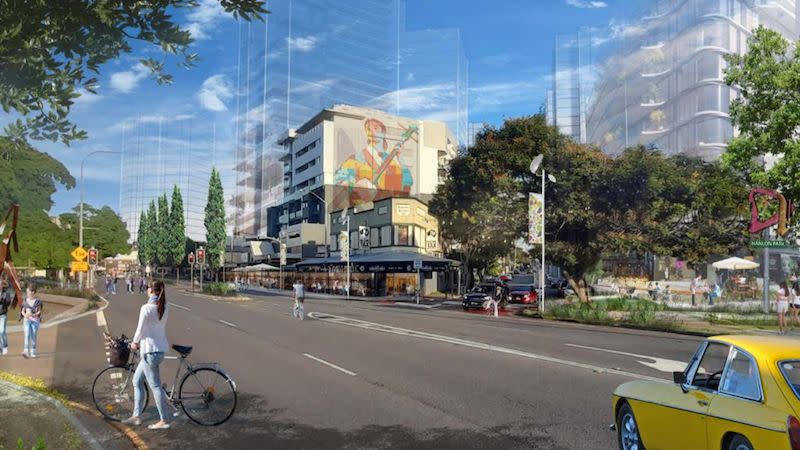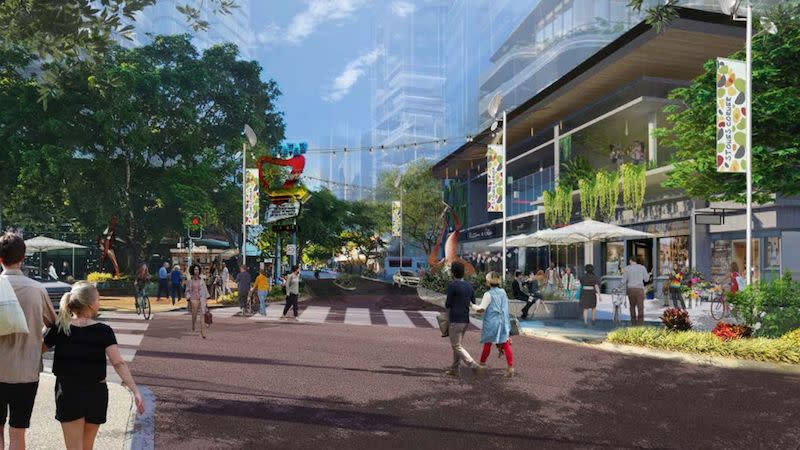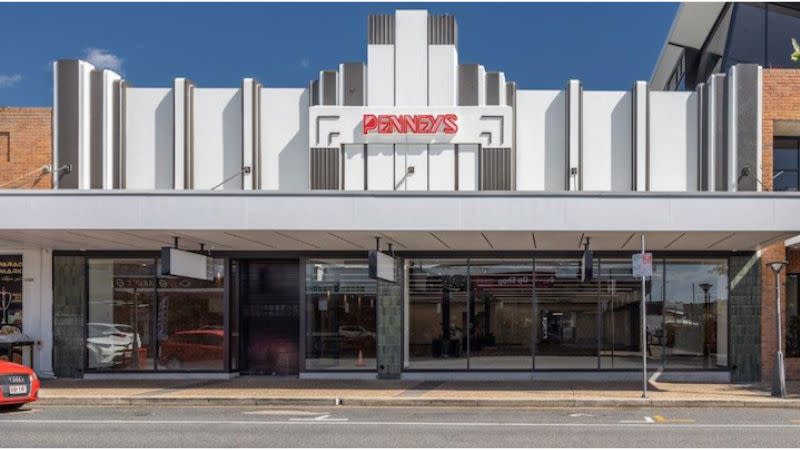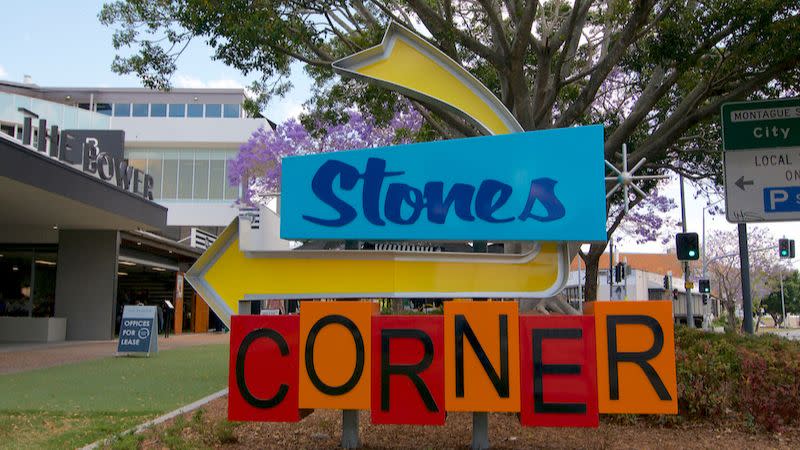Resources
Newsletter
Stay up to date and with the latest news, projects, deals and features.
Subscribe![[+] Stones corner](/_next/image?url=https%3A%2F%2Fimages.ctfassets.net%2F8pr762qjocl3%2F7h6I1ym7yeuRKtrw0MAQeP%2F2db403ecbc933d7fc4fb59c24f1fa380%2F2.jpg%3Fw%3D1600%26q%3D75&w=3840&q=75)
Nothing across the spectrum of Australia’s challenged property development sector is business as usual anymore … and that’s not necessarily a bad thing.
A case in point is the collaboration by major landowners and developers to create a precinct vision for a suburban dot on the map in Queensland’s fast-growing south-east corner.
But it is not what has been proposed in the 32-page suburban renewal blueprint for Stones Corner—one of Brisbane’s smallest suburbs—that is of most significance.
Rather, it is the unique way in which it has come together without local council carrot-and-stick planning initiatives.
Turning that traditionally government-led process on its head, it has opened the door to a new unified market-led precinct visioning approach that aligns landowners’ development aspirations with the delivery of better urbanity.
And the crucial common ground has been simply the desire by stakeholders “to do good things”. Specifically, in the case of Stones Corner, to catalyse the long overdue renewal of a once-thriving but now stagnant suburban village just 3km south of the Brisbane CBD.
But perhaps most significant of all has been the willingness by local property players to put aside their competitive instincts and reveal the development trump cards they usually keep close to their chests.
How many times has that happened before?
“Never … I can’t think of one,” says Suburban Futures director Ross Elliott, who also chairs Brisbane City Council’s Better Suburbs Initiative.

“That’s the unique thing about this, the developers who would normally regard each other as competitors have co-operated without being told to.
“They have realised the collective benefit of working together and sharing a future vision is worth more than hiding details from each other.
“That, to me, is a really refreshing change … it’s exciting and, I mean, we should be doing more of this.”
Leading Brisbane-based architect Peter Edwards not only agrees but is already replicating the collaborative strategy with landowners in other precincts in Brisbane.
It was his firm Archipelago and its team of urban designers who got the call late last year from Stones Corner stakeholders to help create a precinct vision.
Working with 16 major landowners—representing almost 50 per cent of the holdings in the precinct—it putting together the Stones Corner Precinct Suburban Renewal Opportunity.
“As opposed to council creating a vision for a precinct and then implementing it through some planning overlays and using a variety of carrots and sticks to corral landowners in a particular direction, this is the landowners coming together to establish the vision and be the force of leadership in effectively driving the urban renewal of a significant precinct within the city.”
Edwards says other landowners need to take heed.
“They should take note that this is a bellwether for a new way of doing things moving forward … to gather together with other landowners, stop treating them like they’re your competitor, start treating them like they're your colleague and supporter, and work together to establish some leadership in the renewal of these important precincts.
“And we will all get a much better result.”

The Stones Corner precinct renewal vision has already been submitted as a supporting document for one major development application and it is expected others will follow.
Developer Stockwell used it to inform the concept planning for the proposed redevelopment of its Stones Corner Village retail centre.
Spanning one of the precinct’s largest landholdings—a 5709sq m site at 405 Logan Road—it is earmarked for a mixed-use development comprising two towers of 14 and 16 storeys accommodating 209 apartments above a common podium with retail and dining tenancies providing an activated frontage.
Edwards says to allow for “good things to happen … it’s really just about everyone slipping themselves into the shoes of the other stakeholders for a moment”.
“That’s what this process has really done very successfully because it does demonstrate a positive and aligned future for Stones Corner, which can be facilitated by significant investment by incumbent landowners and complemented by some potential strategic investment by the council.”
He says developers are becoming much more mature in understanding the benefits of planning beyond the edge of their own property boundaries.
“You need to have a masterplan that reaches outside of your site, grabs value and pulls it into your site. And that is a two-way transaction. You may well choose to do things that sets up benefits that will go outside of the boundaries of your site and to the public and to your neighbours. But you'll get benefit back to you as well.
“That's a city making mindset and not all developers have that. But there's certainly a growing maturity in the development community that realises the value of that.”
Elliott says Brisbane has spent the past 30 years doing a great job of renewing its inner-city precincts but at the same time it has “done very little about renewing its suburban precincts”.
“We recognise that these places have to change.

“But if we go forward on a site-by-site and DA-by-DA basis, the community—and even the council assessment people—don't get a sense of where this it’s all heading and what it’s going to look like.
“So, I think if everyone shares a similar view about the future of a precinct, then collaborating is a terrific result … and the community is going to feel a lot more confident about where a lot of this change is going and what it's actually going to mean.
“And at the end of the day, it’s private money that’s going to do it. It’s only developers who are going to make that difference.”
The genesis of the Stones Corner collaboration was the council’s $20-million transformation of nearby Hanlon Park from a concrete stormwater drain into a natural creek and popular recreational area. It got landowners thinking about how that infrastructure investment could be leveraged to reinvigorate the tired village.
Local developer DeMartini Fletcher has been an early mover in the precinct, recently completing a major renovation of the landmark 1930s Art Deco-style Penney’s Building at 357 Logan Road.
The heritage-listed brick building, formerly a retail store, has been restored and adaptively reused as office space.
DeMartini Fletcher development manager John Lunney says the collaboration by the Stones Corner precinct’s stakeholders to drive the vision-led renewal strategy has been “seamless”.
“Basically, the suburb has been a sleeping giant,” he says.

“But it appears like it has finally turned the corner in terms of the ownership profiles, changing from those generational holders to more active and progressive ownership.
“It seems to have hit the radar of a lot of developers and we’re seeing an influx of DAs.
“We’ve got three assets in the suburb and we’ve always seen a lot of potential in Stones Corner … it’s got a great proximity to the city, it’s on that Olympic corridor through to the Gabba and it's got all the key ingredients for urban renewal.
“It has just needed those like-minded individuals to put the shoulder to the wheel and make it happen.”
Elliott is quick to point out, however, that although the vision-led renewal strategy “does kind of flip things on a head … it has no authority, it has no regulatory impact at all”.
“It’s an engagement document, for want of a better word.”
Nevertheless, he also notes that the council’s neighbourhood plan for Stones Corner is nearly 15-years-old.
“It predates Covid. It predates Hanlon Park. It predates all of the investment that’s gone on nearby in terms of the PA Hospital and Ecosciences precincts. It no longer reflects the opportunity that’s there.

“And you’d have to say, if that regulatory instrument had been any good, how is it then that Stones Corner has languished for the past 10 to 15 years?”
Elliott says people are fed up with the semi-adversarial business-as-usual approach to planning.
“The other thing, too, is if you look at what’s been laid out in that draft SEQ Regional Plan and the growth that they’re expecting—business-as-usual is just not going to deliver it.”
“It's just going to be incapable of keeping up,” he says. “So we're going to have to look at more innovative market-led engagement opportunities like this.”
One of the fastest growing regions in the country, it is forecast south-east Queensland will need to accommodate an additional 2.2 million residents during the next two decades. By 2046, it is estimated it will have become home to a total of six million people, surpassing the current population of Greater Sydney.
Archipelago’s Peter Edwards says massive change is coming and “it can be a thing that happens to us or it can be a thing that happens for us”.
“We shouldn't be afraid of change because if we grab it as a positive force it's an enormous opportunity for us to do good things really well and get great outcomes.”
Edwards says the advocacy and alignment from landowners to establish a unifying urban vision at Stones Corner is the kind of initiative that will be needed going forward.
The collaborative vision-led approach, he says, is already being seen at a local government level as “an important precedent … opening the door for innovation and leadership to come from landowners”.
Meanwhile, he and his Archipelago team have got between 10,000 and 15,000 residences on their drawing boards.
And therein—given the prevailing headwinds in the development sector—lies another imperative for innovation “in terms of how on earth we’re going to build them”, Edwards says.
“So we're going to find some exciting building and development innovations are going to come to us via necessity in the next five years.”
You are currently experiencing The Urban Developer Plus (TUD+), our premium membership for property professionals. Click here to learn more.
